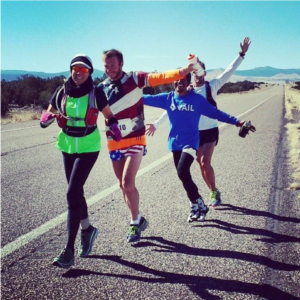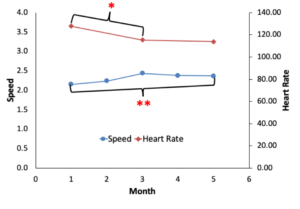
In 2015, a team of athletes ran a marathon a day for 140 days as they cross the continental United States for a total of 3,080 miles. Race Across the USA, was developed by the 100 Mile Club® to spread awareness of and combat childhood obesity in the US. Runners participated in a marathon each day, and spent their afternoons visiting elementary schools along the route.
I was fortunate enough to be part of the research team that collected all manner of data including how many calories they burned, samples of their gut microbiota, and muscle mass and percent body fat throughout the race.

I and my collaborators (Caitlin Thurber, Herman Pontzer, Lara Dugas, and John Speakman) examined energy expenditure and heart rate at the beginning, middle and end of the race with hopes of detecting possible metabolic adaptations to such extreme levels of physical activity.Previous work measured metabolic rates among marathoners and ultra-marathoners; however, we do not know the physiological impact sustained endurance running has on the human body.
This work has resulted in two publications:
1) Sustained high levels of physical activity lead to improved performance among “Race Across the USA” athletes
Ocobock et al. 2019
This work focused on athlete heart rate and marathon times throughout the race.
Main Take-Aways:
– Athletes improved their performance as the race went on
– Athletes, through physiological and potentially biomechanical mechanisms were able to run faster without an accompanying increase in heart rate. In other words, they became much more efficient at running.

2) Extreme events reveal an alimentary limit on sustained maximal human energy expenditure
Thurber et al. 2019
This work focused on athlete heart rate and marathon times throughout the race.
Main Take-Aways:
– Athletes did not increase their energy expenditure as much as would be predicted given their activity level
– In context of other endurance events, there may be a limit to the human ability to sustain high levels of physical activity, and that limit may be mediated by the gastrointestinal tract.
